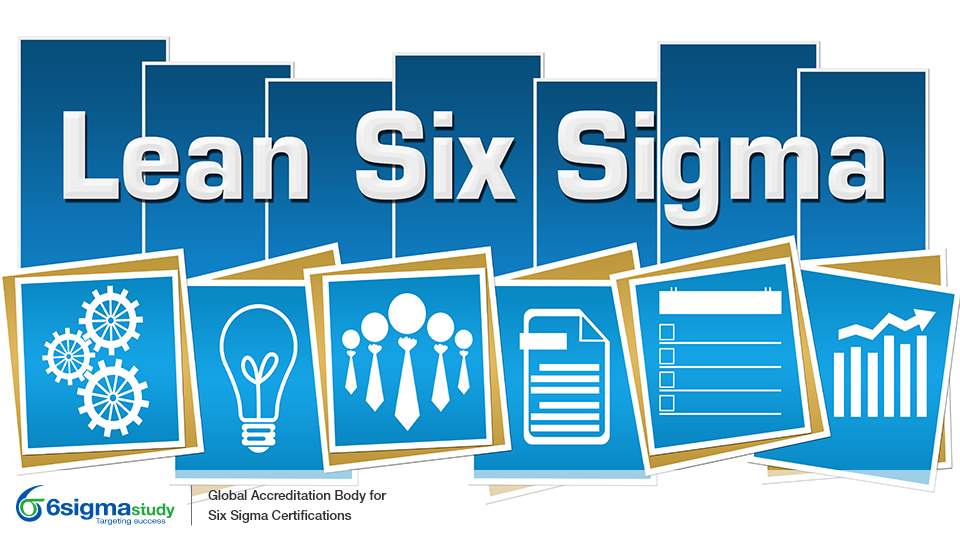Lean Six Sigma in Business Transformation
Posted by 6sigmastudy® on December 27, 2023 | Quality Management
Keywords: Six Sigma 6sigmastudy Lean Six Sigma in Business Transformation Six Sigma Yellow Belt (SSYB™) Six Sigma Green Belt (SSGB™) Six Sigma Black Belt (SSBB™) Lean Six Sigma Green Belt (LSSGB™) Lean Six Sigma Black Belt (LSSBB™) Free Articles Free Six Sigma Articles TQM Six sigma define dmaic dmadv
Businesses are consistently seeking methodologies to boost operational efficiency, cut costs, and improve customer satisfaction. A widely acknowledged and potent approach in this pursuit is Lean Six Sigma—an extensive methodology that integrates the principles of Lean and Six Sigma. This piece of writing investigates the foundational principles of Lean Six Sigma, probes into the methodologies that make up its core, and emphasizes the wide-ranging benefits it provides to organizations of different scales.
Lean Six Sigma represents a strategic integration of Lean methodology and Six Sigma principles, both firmly grounded in the Scientific Method and committed to achieving operational excellence. Originating in the 1940s, Lean is centred on the elimination of waste and the optimization of processes. In contrast, Six Sigma, emerging in the 1980s, concentrates on improving quality by minimizing defects. Through the amalgamation of the strengths inherent in both approaches, Lean Six Sigma equips organizations with a systematic and all-encompassing toolkit, fostering a culture of effective problem-solving.
Lean Six Sigma adheres to a structured 5-step methodology known as DMAIC—Define, Measure, Analyse, Improve, and Control. This framework functions as a transparent roadmap for teams to systematically recognize, assess, and address operational challenges.
- Define Phase: During this initial phase, the issue or potential for improvement is clearly expressed, establishing the foundation for the improvement process.
- Measure Phase: Quantification plays a crucial role in this phase. Teams analyse data to comprehend the magnitude of the problem, establishing a baseline for improvement efforts.
- Analyse Phase: The root causes of the identified problem are methodically identified during this phase. It entails a thorough examination of processes to pinpoint specific areas for improvement.
- Improve Phase: During this phase, solutions to address the root causes are formulated and put into action. The emphasis is on effecting meaningful changes that will lead to tangible improvements.
- Control Phase: After implementing improvements, controls are established to sustain these changes over time. The objective is to uphold the gains achieved and consistently strive for perfection.
Implementing Lean Six Sigma provides numerous benefits for organizations, such as:
- Improved customer experience: Simplifying processes boosts customer satisfaction by creating a smoother experience. This leads to loyalty and repeat business as customers appreciate the improved efficiency.
- Higher bottom-line results: Efficient process flows streamline operations, minimizing time and resource wastage. This enhances productivity, reduces costs, and ultimately boosts profitability by optimizing resource utilization. Improved workflows also lead to quicker delivery times, customer satisfaction, and a competitive edge in the market.
- Cost reduction: Transitioning from defect detection to prevention minimizes expenses associated with rectifying errors, as it addresses issues at their source. Proactive measures, such as robust quality controls and process optimization, prevent defects, resulting in reduced rework costs and the elimination of waste. This shift enhances overall operational efficiency and contributes to a more cost-effective and sustainable production process.
- Organizational nimbleness: Standardized processes provide a structured framework, allowing organizations to respond swiftly and effectively to challenges. Consistent workflows streamline decision-making, facilitating adaptability in the face of evolving circumstances. This agility enhances overall organizational resilience, enabling prompt adjustments and optimal responses to changing environments or unforeseen challenges.
- Increased capacity and profitability: Reducing lead times in processes accelerates production cycles, increasing an organization's overall capacity to meet demand. Shorter lead times enable quicker response to market changes, fostering agility and flexibility. This enhanced operational efficiency not only boosts productivity but also positions the organization to capitalize on opportunities and stay competitive.
Practitioners in Organizational Development (OD) acknowledge the synergies between Lean Six Sigma and OD techniques. Demonstrated success stories at companies such as Motorola and GE underscore the efficacy of blending Lean Six Sigma tools with comprehensive OD methods to instigate significant change and attain tangible business outcomes.
Lean Six Sigma guides businesses, big and small, to reach goals, grow revenue, and provide consistent, reliable products and services to customers. Involving employees in Lean Six Sigma not only boosts profits but also empowers them to improve their processes, leading to increased job satisfaction, better performance, and overall organizational effectiveness.
In a world where success relies on efficiency and adaptability, Lean Six Sigma is a versatile and proven methodology. It's used across various industries, showing its universal relevance in manufacturing, government, and non-profits. Embracing Lean Six Sigma allows businesses to transform, achieve operational excellence, and provide more value to customers and stakeholders.
For more such interesting articles on Six Sigma and its concepts, please click here

